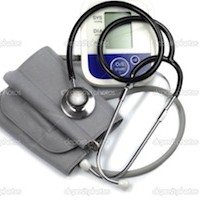Soft approach: Wong singing ‘Wo Men De Gu Shi’ along with fans at the launch of the song’s music video in Beijing. (Inset) A footage from the MV showing Wong with the MV female lead who is about to undergo surgery.
Malaysian singer-composer Michael Wong’s Mandarin hit song has been made the official music video to promote the country as a top destination for Chinese visitors to seek healthcare services.
MALAYSIA’S very own singer-composer Michael Wong really has the ability to touch his fans with his ballads.
Back in 2005, his hit Mandarin song Tong Hua (Fairy Tale) struck a soft spot on a tragic love for someone dying.
This time, the singer is back with Wo Men De Gu Shi (Our Story) which is about treasuring one’s health in pursuit of one’s dreams.
The music video of this song, his latest, has been made the official MV of the Malaysia Healthcare Travel Council (MHTC) in its bid to promote Malaysia as a top destination for Chinese visitors to seek healthcare services while enjoying their stay in the country.
Wong, who is the Malaysia Healthcare Travel Ambassador, said the MV was a soft approach not only to tell visitors from other countries what services Malaysia has to offer but also one to take good care of our health.
“During the filming of the MV at a hospital in Kuala Lumpur, the crew experienced an incident that stirred our emotions. The doctor who was involved in the shoot was suddenly called on to treat a patient with a critical heart failure condition.
“We had to clear the set for the medical workers to save the patient’s life. We later heard that the patient survived. We were thrilled because we thought that if the doctor was not with us at that moment and provided immediate treatment, the patient could have died,” he said at the launch of the MV in Beijing recently.
Prince Court Medical Centre sales and marketing manager Rachel Chan said the filming of the MV was halted for about an hour and the site where the hospital’s only biplane cath lab equipment was installed was then used by the medical workers to perform a coronary angiography on the patient.
She said after the surgery the crew resumed filming and finished their job in the wee hours the following day.
At first sight, viewers will surely draw similarities between the Tong Huaand Wo Men De Gu Shi music videos. They were both shot in the hospital and one of the scenes where Wong played the piano were quite identical.
“The representatives from the MHTC had watched the MV and hoped it would send a message on the philosophy of health via this new song.
“Perhaps you will feel that both music videos are quite similar as the female leading roles in the MV were hospitalised. That’s all, what the new MV and song want to express is different,” Wong said.
He said that unlike in Tong Hua where he lost the female lead, it was a happy ending for the new song where his “partner” was successfully treated.
Two weeks before the launch of its MV, the Wo Men De Gu Shi song was aired over radio stations, followed by the release of the MV on popular video portals such as Youku, Tudou, Sina and 56.com.
In January, the Ipoh-born singer will hold an “Our Story” concert at the Legacy@Huashan Creative Park in Taipei where he is currently based.
It’s still too premature to tell how successful this song will be in branding the Malaysian medical and healthcare industry and drawing Chinese medical tourists here.
In the past few years, MHTC has invited the Chinese media for familiarisation trips to report about Malaysian healthcare services.
MHTC chief executive officer Dr Mary Wong said since its establishment in 2009 under the purview of the Health Ministry, the council had participated in promotions in Hong Kong, Guangzhou, Shanghai, Chengdu and Guizhou and it would continue to be active in penetrating the Chinese market.
“A lot of Chinese like to visit Malaysia. Later, Malaysia became known as a medical tourist destination and more Chinese come here for cosmetic surgery and dental and cardiac treatment.
“We can work with travel agencies, insurance companies and big corporations in China. These days the Chinese corporations are giving benefits to their employees such as trips abroad that include healthcare screening,” she said.
Last year, the number of Chinese nationals visiting Malaysia for healthcare services increased by 50% from 7,357 in 2010 to 11,029. The number continues to surge with up to 10,000 visitors as of August this year.
source: http://www.thestar.com.my / Home> NEWS> Columnists> Made in China / by Chow How Ban <hbchow@thestar.com.my> / Saturday, November 24th, 2012



